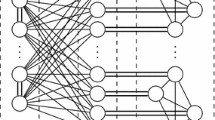Abstract
Greedy algorithms are simple, but their relative power is not well understood. The priority framework (Borodin et al. in Algorithmica 37:295–326, 2003) captures a key notion of “greediness” in the sense that it processes (in some locally optimal manner) one data item at a time, depending on and only on the current knowledge of the input. This algorithmic model provides a tool to assess the computational power and limitations of greedy algorithms, especially in terms of their approximability. In this paper, we study priority algorithm approximation ratios for the Subset-Sum Problem, focusing on the power of revocable decisions, for which the accepted data items can be later rejected to maintain the feasibility of the solution. We first provide a tight bound of α≈0.657 for irrevocable priority algorithms. We then show that the approximation ratio of fixed order revocable priority algorithms is between β≈0.780 and γ≈0.852, and the ratio of adaptive order revocable priority algorithms is between 0.8 and δ≈0.893.
Similar content being viewed by others
References
Angelopoulos S, Borodin A (2004) On the power of priority algorithms for facility location and set cover. Algorithmica 40:271–291
Arrow K (1951) Social choice and individual values. Wiley, New York
Aspnes J, Azar Y, Fiat A, Plotkin S, Waarts O (1997) On-line routing of virtual circuits with applications to load balancing and machine scheduling. J ACM 44:486–504
Baptiste P (1999) Polynomial time algorithms for minimizing the weighted number of late jobs on a single machine with equal processing times. J Sched 2:245–252
Bar-Noy A, Guha S, Naor J, Schieber B (2001) Approximating throughput in real-time scheduling. SIAM J Comput 31:331–352
Borodin A, Nielsen M, Rackoff C (2003) (Incremental) priority algorithms. Algorithmica 37:295–326
Borodin A, Boyar J, Larsen K (2005) Priority algorithms for graph optimization problems. In: Lecture notes in computer science, vol 3351. Springer, Berlin, pp 126–139
Chrobak M, Durr C, Jawor W, Kowalik L, Kurowski M (2006) A note on scheduling equal-length jobs to maximize throughput. J Sched 9:71–73
Chuzhoy J, Ostrovsky R, Rabani Y (2001) Approximation algorithms for the job interval scheduling problem and related scheduling problems. In: Proceedings of 42nd annual IEEE symposium of foundations of computer science, pp 348–356
Davis S, Impagliazzo R (2004) Models of greedy algorithms for graph problems. In: Proceedings of the 15th annual ACM-SIAM symposium on discrete algorithms, pp 381–390
Erlebach T, Spieksma F (2003) Interval selection: applications, algorithms, and lower bounds. J Algorithms 46:27–53
Fleischer R, Wahl M (2000) On-line scheduling revisited. J Sched 3:343–353
Garey M, Johnson D (1979) Computers and intractability: a guide to the theory of NP-completeness. Freeman, New York
Graham R (1966) Bounds for certain multiprocessor anomalies. Bell Syst Tech J 45:1563–1581
Horn S (2004) One-pass algorithms with revocable acceptances for job interval selection. Master’s thesis, University of Toronto
Ibarra O, Kim C (1975) Fast approximation algorithms for the knapsack and sum of subset problem. J ACM 22:463–468
Iwama K, Taketomi S (2002) Removable online knapsack problems. In: Lecture notes in computer science, vol 2380. Springer, Berlin, pp 293–305
Kellerer H, Mansini R, Pferschy U, Speranza M (2003) An efficient fully polynomial approximation scheme for the subset-sum problem. J Comput Syst Sci 66:349–370
Martello S, Toth P (1990) Knapsack problems: algorithms and computer implementations. Wiley, New York
Moore J (1968) An n-job, one machine sequencing algorithm for minimizing the number of late jobs. Manag Sci 15:102–109
Regev O (2002) Priority algorithms for makespan minimization in the subset model. Inf Process Lett 84:153–157
Author information
Authors and Affiliations
Corresponding author
Additional information
A preliminary version of this paper appeared in the Proceedings of COCOON 2007, LNCS 4598, pp. 504–514.
Rights and permissions
About this article
Cite this article
Ye, Y., Borodin, A. Priority algorithms for the subset-sum problem. J Comb Optim 16, 198–228 (2008). https://doi.org/10.1007/s10878-007-9126-9
Published:
Issue Date:
DOI: https://doi.org/10.1007/s10878-007-9126-9




